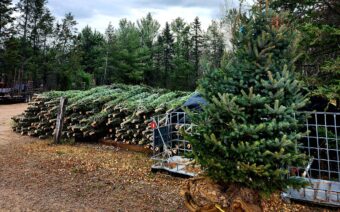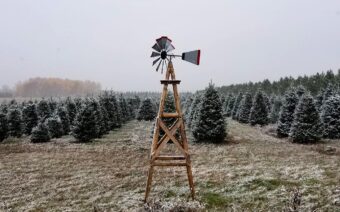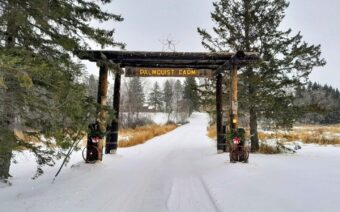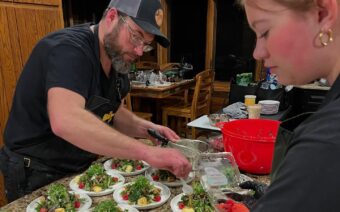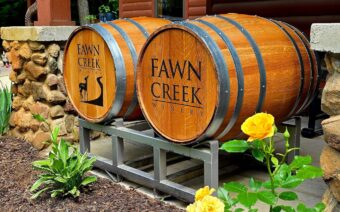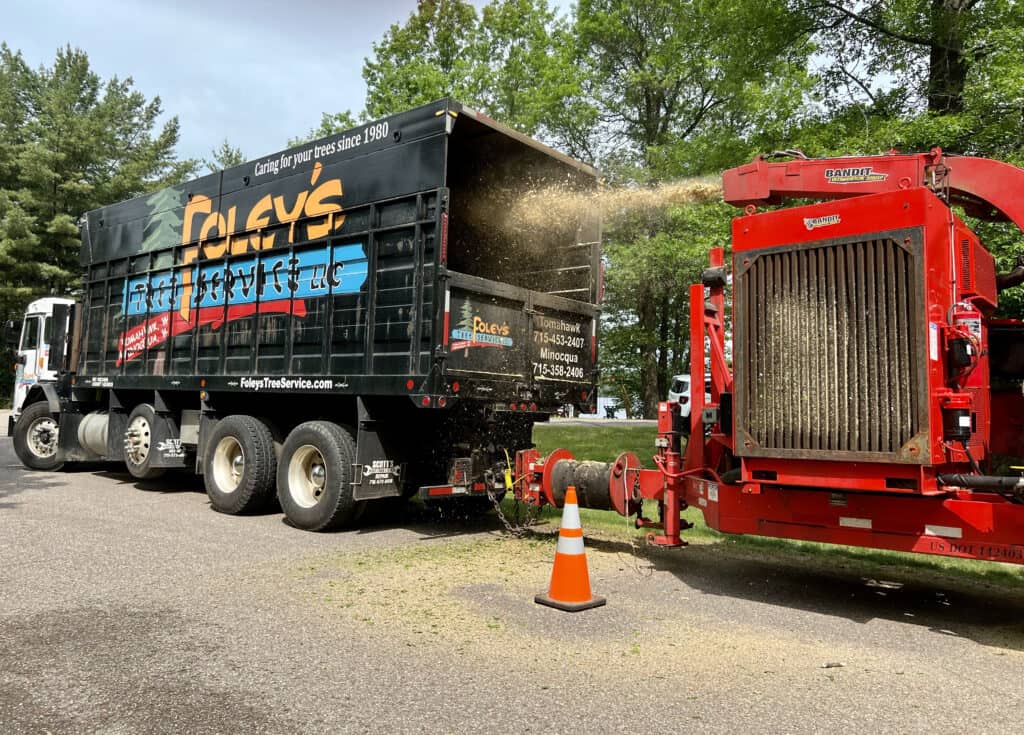
July 7, 2025
TOMAHAWK – Beginning with a pickup truck and a few chainsaws 45 years ago, Foley’s Tree Service in Tomahawk has grown – like a tree – into much more.
Owned and operated by Ted Foley, the business specializes in tree removal and pruning, land and lot clearing, storm damage cleanup, tree planting and more.
“In 1980, my dad, Jerry, started the company after moving to Tomahawk from the Twin Cities,” Ted said. “He tried to find his way and was doing some logging. When people found out about that, they started asking him to cut trees down in their yards.”
During that time, more than four decades ago, Ted said there weren’t many tree service companies.
“He definitely found a niche and ran with it,” he said.
Currently, Ted said Foley’s serves most of North Central Wisconsin and parts of the Upper Peninsula of Michigan.
Fate would have it
A Nordic skier in his younger days, Ted said after graduating from Tomahawk High School in 2000, he planned to attend the University of Wisconsin-Green Bay to ski.
But fate, he said, would have other plans for him.
“I developed a skiing injury during my senior year of high school, so I ended up staying back home and attending Nicolet College (in Rhinelander),” he said. “I went to Nicolet to see if the injury would heal itself, but it didn’t.”
While at Nicolet, Ted said he took classes in the forestry space that interested him.
“I’m a certified arborist – a professionally trained individual in the science and art of planting, caring for and maintaining trees and other woody plants,” he said. “I was there for three semesters and then went straight into business with my dad in 2002.”
When he entered the partnership with his dad 23 years ago, Ted said it was just the pair of them working the business.
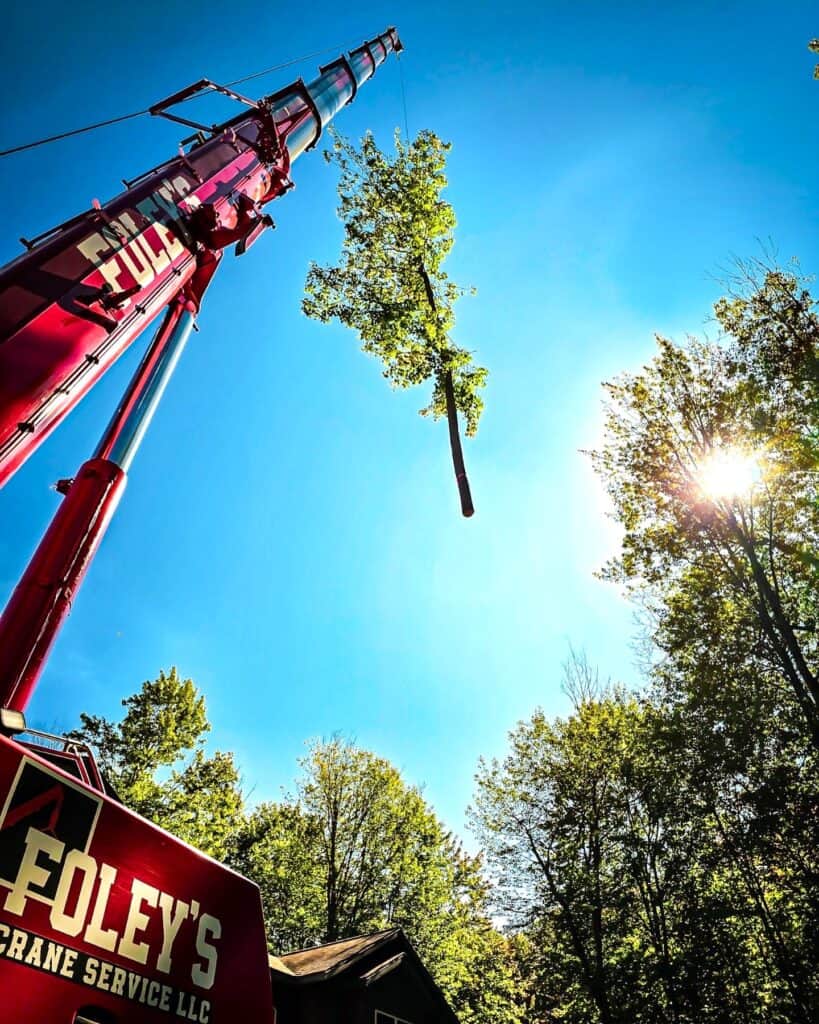
“My dad never really had equipment, so in 2002, it was still pretty much a pickup, a trailer and some chainsaws,” he laughed. “Today, we have about 55 employees and more than 100 pieces of equipment.”
According to the company’s website (foleystreeservice.com), that equipment includes:
- Various cranes
- Multiple backyard lifts with up to 107 feet of vertical reach
- Log loader trucks
- Bucket truck
- Debris loader trucks
- Large volume chippers
- Forestry mulcher
- 700 HP horizontal grinder
- Portable stump grinders
- Skid steers
Ted said his dad initially named the business Jerry’s Tree Service, but the name was changed to Foley’s Tree Service when the duo entered the partnership.
“My dad has been fully retired for 12 years now,” he said.
Timber!
In an area like the Northwoods of Wisconsin with a plethora of trees, Ted said there is no shortage of work for Foley’s.
On any given day, he said eight to 10 crews are out felling trees, cleaning up storm damage, clearing lots or planting trees.
“We do a couple thousand projects per year,” Ted said. “On average, I’d estimate our crews are doing 30-35 projects per day.”
Mother Nature, Ted said, has an impact on the tree industry at various points throughout the year.
“Unfortunately, during a storm, people lose trees, but that also means we are called to action,” he said. “It’s not necessarily good for clients, but it helps the tree service industry. It’s the nature of the beast and part of what we do.”
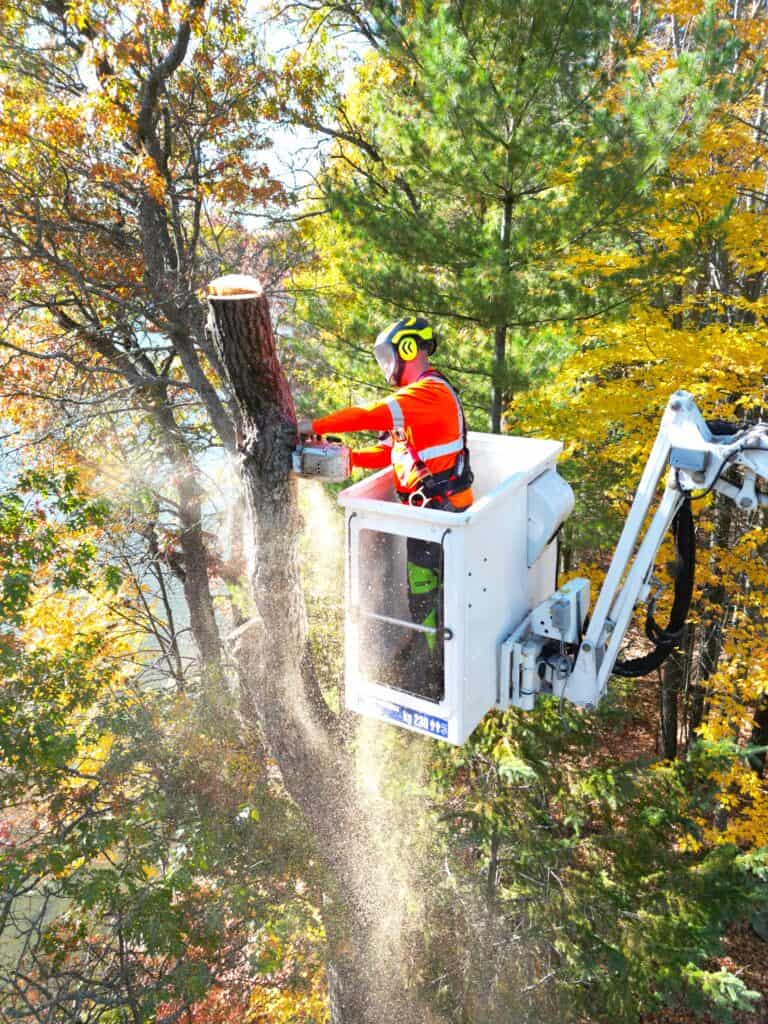
Ted said because Foley’s is a bigger size, it is efficient in storm damage cleanup.
“We also have the best of the best equipment in the industry, so when storms hit, we can respond and take care of the damage,” he said. “With our volume of equipment and the volume of crews we have, we can usually get things cleaned up within a few days.”
Another major part of Foley’s work, Ted said, is removing hazard trees.
“People are willing to save up and spend the money on a hazard tree, rather than having to think about it – living with that fear that this tree might fall and hit their house or hurt someone,” he said. “People might also just have too many trees on their property where they want a little more sunlight.”
Ted said an ice storm earlier this year in North Central Wisconsin is a good case in point of where Foley’s sprang into action.
“There wasn’t a lot of, ‘We have to go there right now to take care of things,’” he said. “There was certainly some of that, but it ended up creating a lot of calls where people saw all these white pine branches snapping, and they decided they didn’t want those trees anymore. They didn’t want those branches to keep spiking through their roofs. Every storm is a little different, but ice storms are the worst because of the hanging branches.”
Ted said because Foley’s offers multiple services, it doesn’t get hit too hard by economic downturns.
“Tree work is a necessity,” he said. “Maybe we’re not going to do as many land clears for new houses if things slow down a bit, but between storms or hazard trees, we are very busy.”
Training is key
With hazard trees – and some help from Mother Nature – ultimately deciding when they’re going to fall, Ted said Foley’s prides itself on being as safe as possible.
He said having the best equipment in the industry and training make it all possible.
“I think we have six different backyard lifts now, so we don’t need to climb trees as much as we used to,” he said. “We invest in having the most state-of-the-art equipment to minimize the hazards, which is really what it comes down to. With the training, it’s your core group of individuals who have been with the company for a long time. When we have new employees come in, [the long-tenured employees] are the ones helping train the newcomers.”
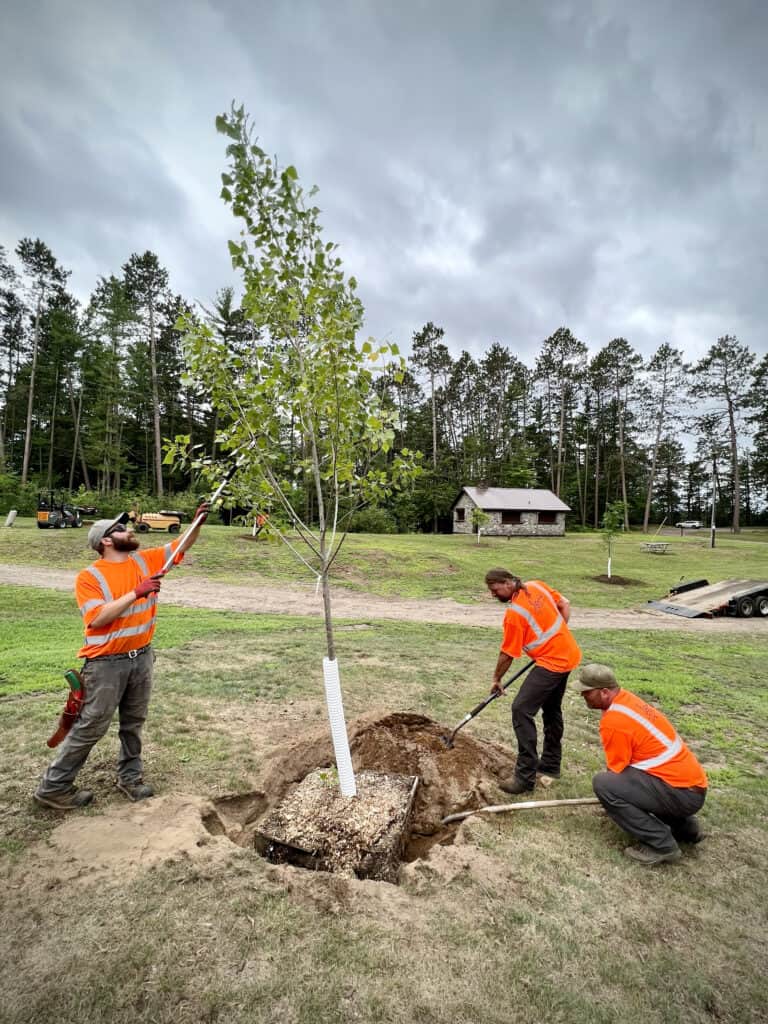
Ted said Foley’s also invests in helmet communication systems to future support safety.
“No matter what you do, tree work is still one of the most dangerous [jobs] in the nation,” he said. “The biggest thing is to make sure everybody is on the same page and aware of potential dangerous situations. The helmet system allows everyone to communicate – it’s a loud atmosphere out there.”
One size doesn’t fit all
Ted said Foley’s offers free estimates – his main job – and prices vary based on several factors.
“I wish it were as easy as saying every tree costs this amount of dollars,” he said. “We get that question all the time – ‘How much does it cost to get a tree removed?’ It could be as low as $200 or up to thousands or more. It’s important to get somebody to the property who has the experience of a certified arborist and has been trained in all aspects of tree care.”
Ted said varying cost factors include:
- Where the tree is located on the property – powerlines, structures, service lines, how accessible the tree is
- The health of the tree – rot, damage, weak branches, other factors that affect the strength of the tree
- The height of the tree – the taller the tree, the more complex the removal
- The thickness of the tree – thicker trees are more difficult to remove
- The location of the job geographically – the distance the team and equipment need to travel
“Do we have to come in with our 100-ton crane and remove the tree because it’s hazardous, because we could put something at the property at risk or one of our workers at risk?” he said. “There are so many factors that go into the cost of a project.”
During the consultation process, Ted said Foley’s can help customers prioritize what trees might need attention first.
“Not everybody can just write a big check,” he said. “What do we as arborists feel is the most important thing to take care of on your property? If we look at a project and there is too much for that client to [pay for] in one year, we’ll figure out what we need to do right now and then put a plan together for the next couple of years.”
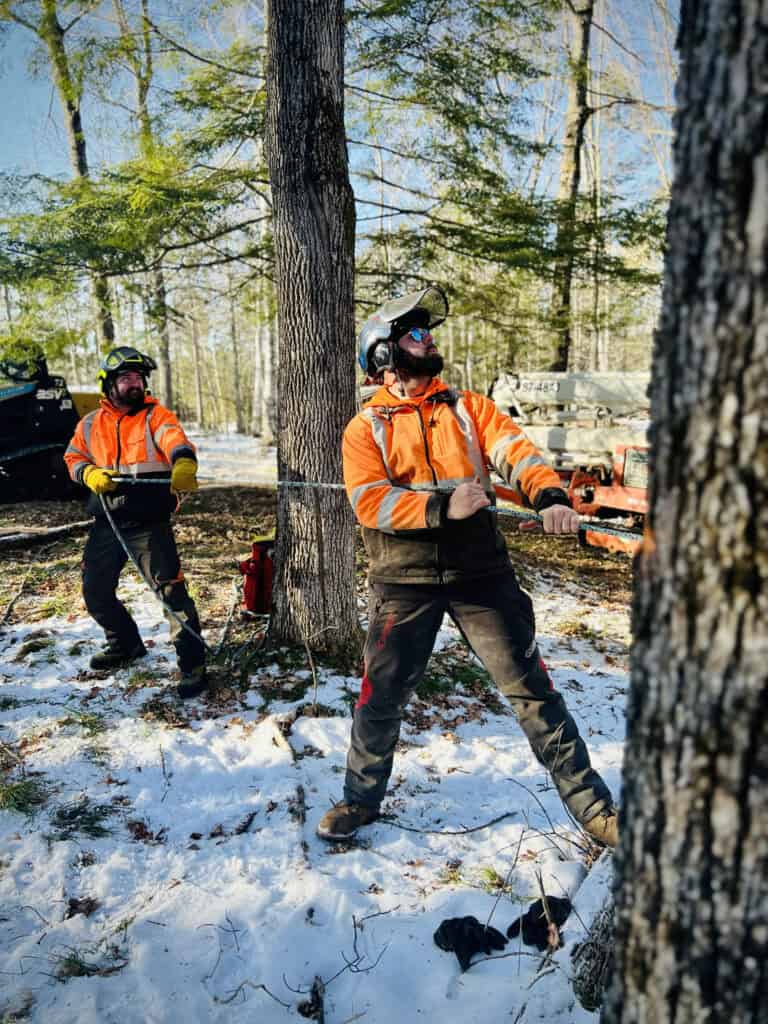
Ted said trees are a blessing, but when they fall there can be some negative results.
“Trees are one of the lifelines of nature,” he said. “They offer shade, air purification, water conservation, soil stabilization, wildlife habitat, energy savings and so much more. But, they can also create a lot of damage when they fall on their own.”
Oftentimes, when trees fall, Ted said it’s by no fault of people – “it’s not from neglect.”
“It’s more about people just not knowing,” he said. “Ninety-five percent of the time, when we’re on a property, it’s not people looking at a tree and saying, ‘Oh, that’s a bad tree – I’m just going to leave it.’ They just don’t know. That’s the biggest thing we do – get out there and have us on site.”
Ted said the worst thing is to have a falling tree cause a catastrophic event.
“We all know the insurance world these days is very interesting, and we all want to try and minimize claims, because you don’t know what’s going to happen after a claim,” he said. “That’s yet another step to make sure the trees on your property are not a liability and they’re safe. Nobody wants an insurance claim.”
Though it wasn’t in the cards for him to make a career out of it, Ted said when he isn’t busy driving around, estimating and meeting with potential clients, he still has some time to Nordic ski.
“I don’t obviously do it like I used to, but I still get out there when I can,” he said.
For more on Foley’s Tree Service, visit its website or find it on Facebook.
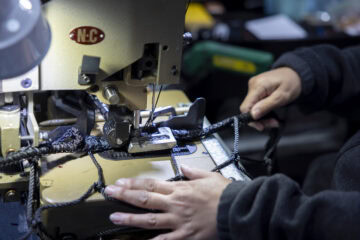 Carron Net Company: Weaving a legacy – one net at a time
Carron Net Company: Weaving a legacy – one net at a time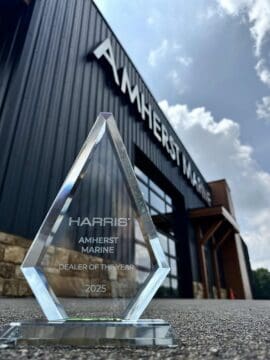 Amherst Marine keeps North Central Wisconsin riding the waves
Amherst Marine keeps North Central Wisconsin riding the waves


